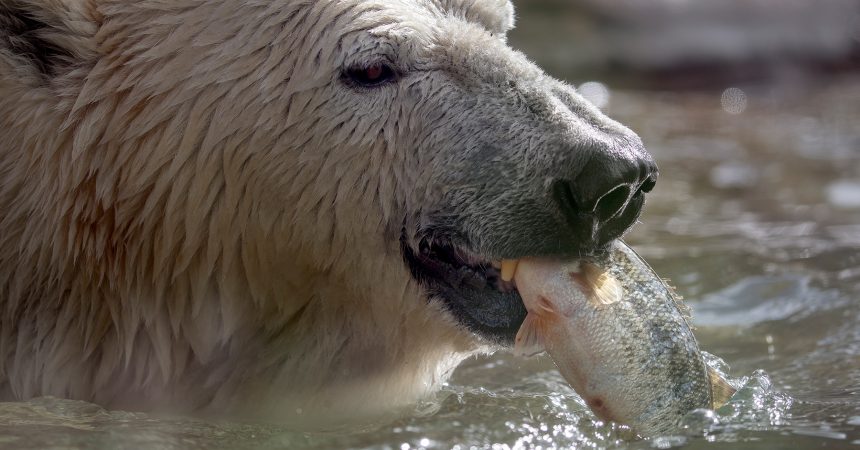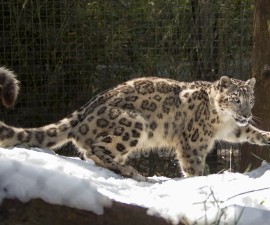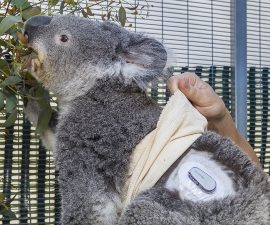The Arctic ambassadors at the San Diego Zoo’s Conrad Prebys Polar Bear Plunge habitat got a fishy treat when they dove into their pool this morning, on International Polar Bear Day (Tuesday, Feb. 27, 2018). Animal care staff provided the three polar bears—Tatqiq, Kalluk and Chinook—with 10 largemouth black bass, to encourage natural hunting behaviors and present additional opportunities to thrive. “Our goal is to promote species specific behaviors by creating novel experiences for these dynamic animals,” said Matt Akel, animal care manager. “Providing our polar bears the ability to hunt fish has proven to be an extremely rewarding experience.”
Animal care staff said they are particularly excited to be able to offer the bears live fish on a monthly basis. “Tatqiq is our most playful bear, and she’s managed to develop a smart technique when it comes to catching these fish,” said Nate Wagner, senior keeper. “Tatqiq has learned to corral the fish into the shallow end where they’re easier to catch, and she uses the corners of the habitat to her advantage.” The bears also cache their fishy snacks in snow piles or other hiding spots, so they can enjoy them throughout the day.
While their wild counterparts in the Arctic require a high-calorie diet of ringed seals to survive, the San Diego Zoo’s polar bears are given a fortified meat-based commercial carnivore diet, trout and other fish, cow femur bones, thawed rabbits, vegetables and lettuce as treats. Additional items are also offered to encourage species-specific behaviors, including a snow machine that allows the bears to dig and roll in freshly flaked ice.
The San Diego Zoo’s polar bears were originally found as orphaned cubs in the wild, with little or no chance of survival without a mother. They were rescued and brought to the Zoo, where they have thrived at the 5,500 square-foot Polar Bear Plunge habitat.
As the world’s largest land carnivore, polar bears have no natural predators—but climate change has led to record-breaking sea ice losses in the Arctic, posing a major threat to their survival. This has critically reduced the bears’ ability to find food and has caused declines in the number of polar bears, with young polar bears facing a higher mortality rate than adults. Today, it is estimated that there are approximately 23,000 polar bears living throughout the Arctic.
Polar bears are listed as Vulnerable on the International Union for Conservation of Nature (IUCN) Red List of Endangered Species, and they are listed as a threatened species under the U.S. Endangered Species Act. If Arctic sea ice continues to decrease at the current rate, the world’s polar bear population is projected to decline by up to 30 percent in the next 30 years. For more than a decade, San Diego Zoo Global’s researchers and its U.S. and Canadian partners have focused on contributing to science-based conservation strategies, to preserve and understand wild populations of polar bears.





